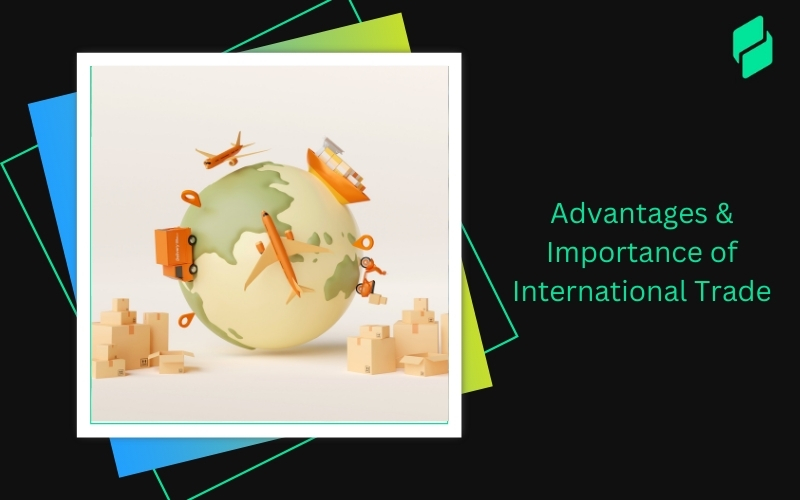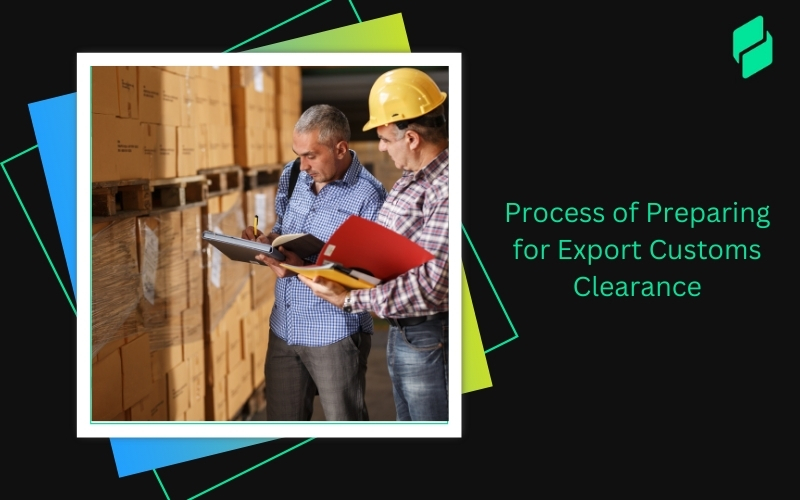Importing goods from China to India involves a series of steps and regulations that both countries adhere to. You need an Import-Export Code (IEC) and import permit to initiate the process. The trade relationship between India and China is significant, with a vast amount of business conducted between them.
Understanding the Harmonized System (HS) code is crucial as it helps classify products and determines the applicable customs duties and taxes. Once you have your IEC, you can identify the products you want to import from China and ensure they meet import regulations.
Shipping and logistics arrangements follow product selection, with sea or air transport options based on budget and timing considerations. Regulatory bodies such as the Directorate General of Foreign Trade (DGFT) in India and the Customs Department oversee imports.
China's Ministry of Commerce overseas export control laws and packaging requirements. Taxation aspects, including Basic Customs Duty (BCD) and Goods and Services Tax (GST), must be understood to navigate the import process successfully.
Optimize your business: use unlimited savings with Pazago fulfilled now!
Get Started ->Detailed Guide on Importing from China to India: Steps, Verification, and Compliance
Finding a Seller
- Do extensive research to find reliable Chinese manufacturers. You can search online marketplaces or get referrals from other importers.
- Check if the company is legitimate by looking at its website, location details, licenses/certifications held, and online reviews from past customers.
Verifying the Supplier
- For verification, ask for company documents like business registration certificates, factory licenses, quality certifications, etc.
- Do a small quantity sample order to test product quality before bulk import.
- It's best to visit the factory to inspect the production process.
- You can also ask for proof of delivery of products to other Indian customers. Ask for BL to show the last shipments. This can ensure that you are not speaking to a scammer.
- Try to negotiate the payment terms to pay once the goods reach India (CAD or DP terms).
Import Documentation
- Apply for an IEC (Importer Exporter Code) number, which acts as your identification number for import/export.
- Prepare commercial invoice, packing list, and bill of lading/airway bill, which will be required at the Indian port.
Payment Method
- Open an irrevocable Letter of Credit (LC) with your bank to pay the supplier securely. LC protects both parties in case of non-delivery or non-payment.
- You can also pay in advance through bank transfer, which carries a higher risk if the supplier doesn't deliver goods.
Shipping Timelines
- On average, sea freight takes 4-6 weeks from China to major Indian ports.
- Air freight is faster at 5-7 days but more expensive.
Customs Clearance in India
- Pay customs duty and submit documents to the customs authority at the port for clearance.
- Inspection may check if goods match documents.
Quality Inspection
- Check the quantity and quality of goods immediately after receipt to report any discrepancies or damages.
- You can get random lab testing done to ensure product quality standards.
Unraveling Import from China to India Procedures

Choosing the Right Product and Supplier in China
Once you have the IEC, you must identify the goods you want to import from China and ensure they comply with the import regulations. This can involve market research or seeking professional assistance to find the right product and supplier in China.
Understanding Port Checks and Major Chinese Ports
Checks at Chinese Ports: Before goods are shipped from China, they undergo several checks to ensure compliance with export regulations. These include quality inspections, customs declarations, and verification of export documents.
China implements strict controls to prevent the export of prohibited items and to ensure all goods meet the safety and quality standards required by the importing country, in this case, India.
Checks at Indian Ports for Chinese Imports:
Upon arrival at Indian ports, imports from China are subject to checks to ensure compliance with national regulations. These checks include customs clearance procedures, verification of the IEC, assessment of customs duties based on the Harmonized System (HS) code, and inspections for quality, safety, and environmental standards. India also scrutinizes goods for adherence to anti-dumping and safeguard measures.
Major Chinese Ports Involved in Trade with India:
The bulk of goods imported from China to India are shipped from several key ports. The most significant among these are:
- Shanghai Port: One of the world's busiest container ports, facilitating vast trade between China and India.
- Shenzhen Port: A major southern China port known for its high-tech product exports.
- Ningbo-Zhoushan Port: Another crucial port, particularly for bulk and container shipping, connecting Zhejiang province to the Indian market.
- Hong Kong Port: Although technically a Special Administrative Region, Hong Kong is a significant gateway for trans-shipments between China and India.
A Brief on Shipping and Freight Forwarding
After choosing your product and supplier, coordinating shipping and logistics is crucial. You can choose sea or air transport, each with cost and timing considerations. Partnering with a reliable freight forwarder, such as Pazago, can significantly streamline this process. Pazago's supply chain solutions offer comprehensive logistics services, ensuring efficient transit of goods from China to India.
When selecting a freight forwarder, consider these criteria:
- Experience and Expertise: Knowledge in handling shipments similar to yours.
- Network and Resources: Strong connections in both the origin and destination countries.
- Services Offered: Ability to provide all necessary logistics services, including customs clearance.
- Customer Service: Responsive support and clear communication.
- Cost and Transparency: Competitive pricing with no hidden fees.
-
Leveraging Pazago's expertise can help navigate the complexities of international shipping, ensuring your goods arrive safely and on time.
Understanding the Role of Trade Regulatory Bodies
Importing goods between countries requires following important procedures and regulations. As important trade partners in Asia, China and India have their own import rules. The Asia-Pacific Trade Agreement aims to reduce tariffs and barriers for member countries like China and India to facilitate trade in the region.
Getting Acquainted with the Directorate General of Foreign Trade (DGFT)
The Directorate General of Foreign Trade (DGFT) is an essential regulatory body in India responsible for overseeing imports and exports.
It administers India's Import-Export Policy and issues the necessary licenses, permits, and authorizations for import from China to India. You can visit the External Affairs Ministry of India's website for more information on the Agreement between The Republic of India and the People’s Republic of China.
A Closer Look at the Customs Department of India
The Customs Department of India is pivotal in the import-export process, enforcing customs regulations and ensuring compliance with import and export procedures.
In addition to collecting customs duties and taxes, vital for regulating international trade, the department also scrutinizes the goods entering and leaving the country. This oversight includes checking the nature of goods to prevent illegal items from being imported or exported and safeguarding the country's economic and security interests.
The customs department regulates the flow of goods into and out of India to prevent illegal activities and plays a crucial role in shaping economic policies. For instance, they may strategically adjust customs duties, such as increasing tariffs on specific products, to safeguard Indian manufacturers from international competition.
This demonstrates the department's active involvement in fostering and protecting domestic industries while managing lawful international trade, including transactions between India and China.
Inside China’s Commerce Ministry
China's Ministry of Commerce is a vital regulatory body for exports from China to India. It oversees and administers export control laws, which may require obtaining an export license depending on the type of goods.
Import Taxes and Duties in India: What You Need to Know?

When importing goods from China to India, it is crucial to understand the various taxes and duties that apply. This section will provide an overview of the essential aspects you need to know.
A Simplified Understanding of Basic Customs Duty
Basic Customs Duty (BCD) is an indirect tax levied on imported goods, and the Indian customs authorities determine the BCD based on the necessary forms submitted by your Customs House Agent (CHA) on your behalf.
BCD is collected by the customs authorities and used as a source of revenue for the government. BCD rates vary depending on the product and are determined by the harmonized system (HS) code.
It is advisable to consult the Indian Customs authorities or hire a customs agent to accurately determine the applicable customs taxes and any other charges associated with importing the specific goods.
Integrating the Goods and Services Tax (GST)
In addition to BCD, importers must also pay the Goods and Services Tax (GST) on imported goods.
The Goods and Services Tax (GST) in India, introduced in 2017, fundamentally transformed the taxation landscape, especially for imports. Under GST, the import of goods is treated as an inter-state supply, attracting Integrated Goods and Services Tax (IGST) alongside any applicable customs duties. IGST is levied on the value of imported goods plus any custom duty charged. This ensures a seamless credit flow across the supply chain, aligning the tax structure of imports with domestic goods and services.
The GST rate for imports is determined based on the product's Harmonized System of Nomenclature (HSN) code, aligning with the rates applicable to similar goods produced within India. This classification under GST facilitates a uniform tax regime, making imported goods more straightforward and predictable.
An Overview of Anti-Dumping Duty and Safeguard Duty
Apart from BCD and GST, importers may also be subject to anti-dumping duty (ADD) and safeguard duty (SGD) under certain circumstances.
ADD is an extra duty imposed on imported goods priced below their normal value in the exporting country. At the same time, SGD is a temporary measure to protect domestic industries from a surge in imports.
These duties ensure a level playing field for domestic industries and prevent unfair trade practices.
Tackling the Challenges of Import from China to India
Unpacking the Complexities of Logistics
Importing goods from China to India can be complex due to various logistic challenges and regulatory barriers.
It is crucial to understand these complexities to navigate the import process smoothly. Some of the issues faced by importers in doing Import from China to India include:
- Regulatory and internal market barriers in China can impact the flow of imports from countries like India.
- The quality and standards of products must meet the requirements specified by Indian regulations.
- Geopolitical tensions between the two countries also affect trade policies from time to time. Issues around borders or political disagreements sometimes increase regulatory scrutiny or shipment delays. Importers must keep abreast of any changes in bilateral relations that can influence trade.
- Ensuring the factory in China has all the applicable certifications and tests for mandatory Indian standards.
Here are the key points to consider regarding applicable certifications and tests for mandatory Indian standards when importing goods from China to India:
- BIS maintains a list of products brought under the compulsory certification scheme through Quality Control Orders (QCOs) by the Government of India. This can be found on the BIS website under the 'Products under Compulsory Certification' section.
- The factory in China exporting goods to India must hold valid BIS certification/license for any products covered under the compulsory certification list per the relevant Indian Standard.
- Some common products included in the list are electrical appliances, toys, pressure vessels, steel products, chemicals, etc. The factory needs to get the specific products tested and certified per the applicable Indian Standards by a BIS recognized lab.
- Sample testing is required to check if the product specifications and quality parameters meet the requirements of the relevant Indian Standard. This testing can be done at any BIS recognized lab in India or abroad.
- The factory must maintain relevant test/inspection reports and certificates demonstrating compliance with the mandatory Indian Standards for the products being exported to India. These documents would be required at the time of customs clearance in India.
- It is advisable to check the BIS website regularly for updates to the list of products brought under compulsory certification and ensure the factory holds valid certifications per the latest requirements.
Thriving Amidst Strict Regulations and Policy Changes
To import goods from China to India, importers must comply with various Indian import regulations to avoid penalties, fines, or the returned shipment. Some of the main requirements include:
- Having a registered business as a legal entity in India.
- Complying with the Indian Bureau of Standards (IBS) certification scheme for products subject to mandatory Indian Standards.
- Ensuring the factory in China has all the applicable certifications and tests for mandatory Indian standards.
Conclusion
Importing goods from China to India involves an intricate array of steps, from procuring an Import Export Code (IEC) to understanding both countries' taxes, duties, and regulations.
These procedures also touch on navigating potential challenges such as trade deficits, logistic complexities, and changing policies. The importance of the Harmonized System (HS) code in this process cannot be overstated, as it aids in the seamless classification of products and determination of customs duties and taxes.
In all these, the ultimate aim is to foster a thriving business environment and improve the powerful trading partnership between India and China. The intricacies of importing from China to India sometimes need to be revised.
This is where Pazago steps in to ensure a smooth and scalable approach to international trade, thereby unlocking new realms of potential for businesses of varying sizes.
With a real-time, easy-to-monitor system and an unwavering commitment to quality, Pazago ensures you stay in control and make informed decisions at every step of your import journey.


.png)








